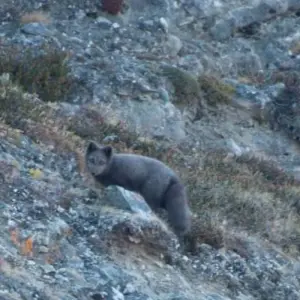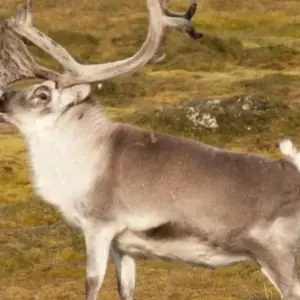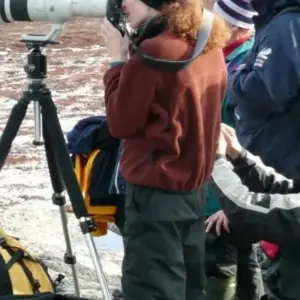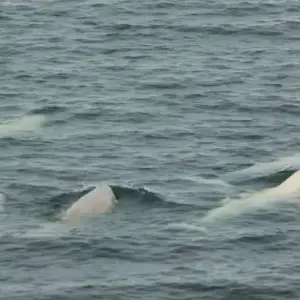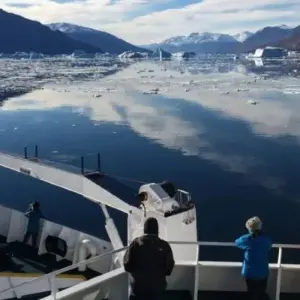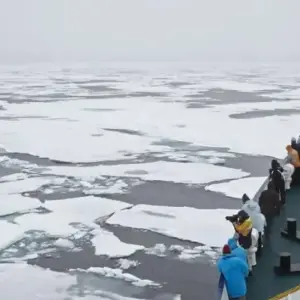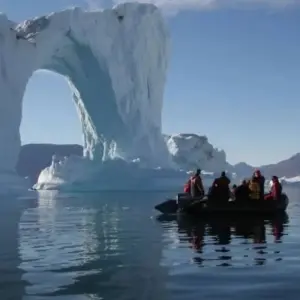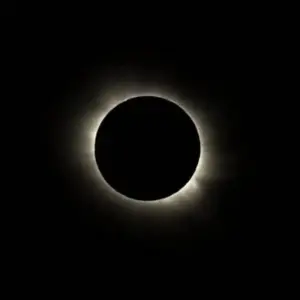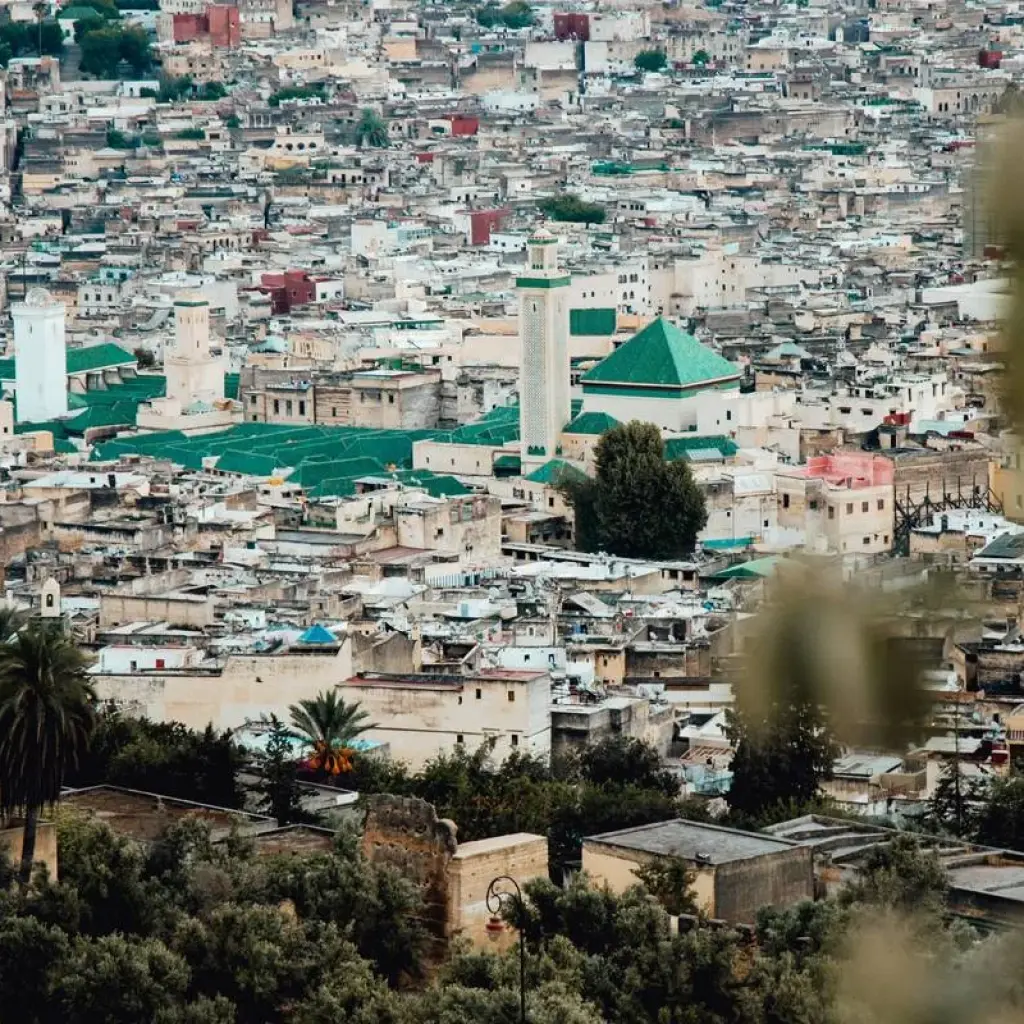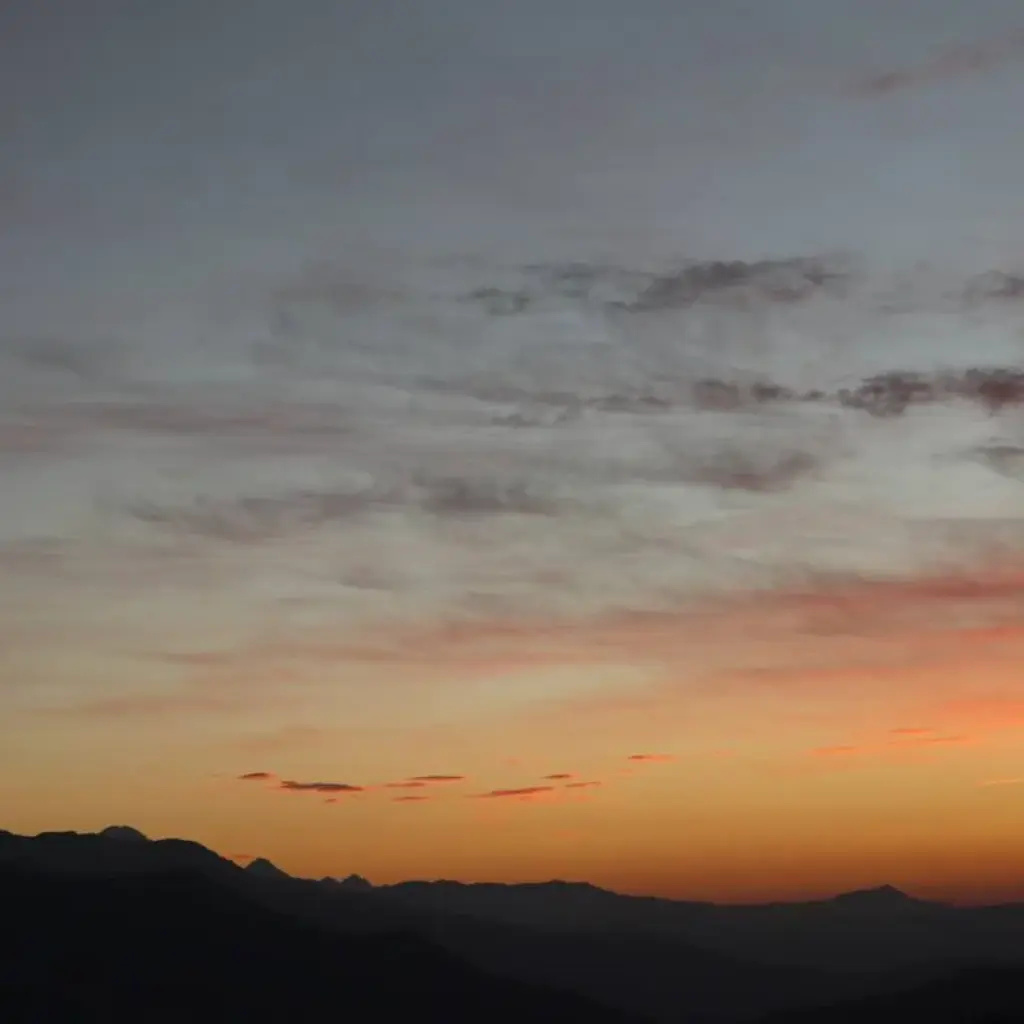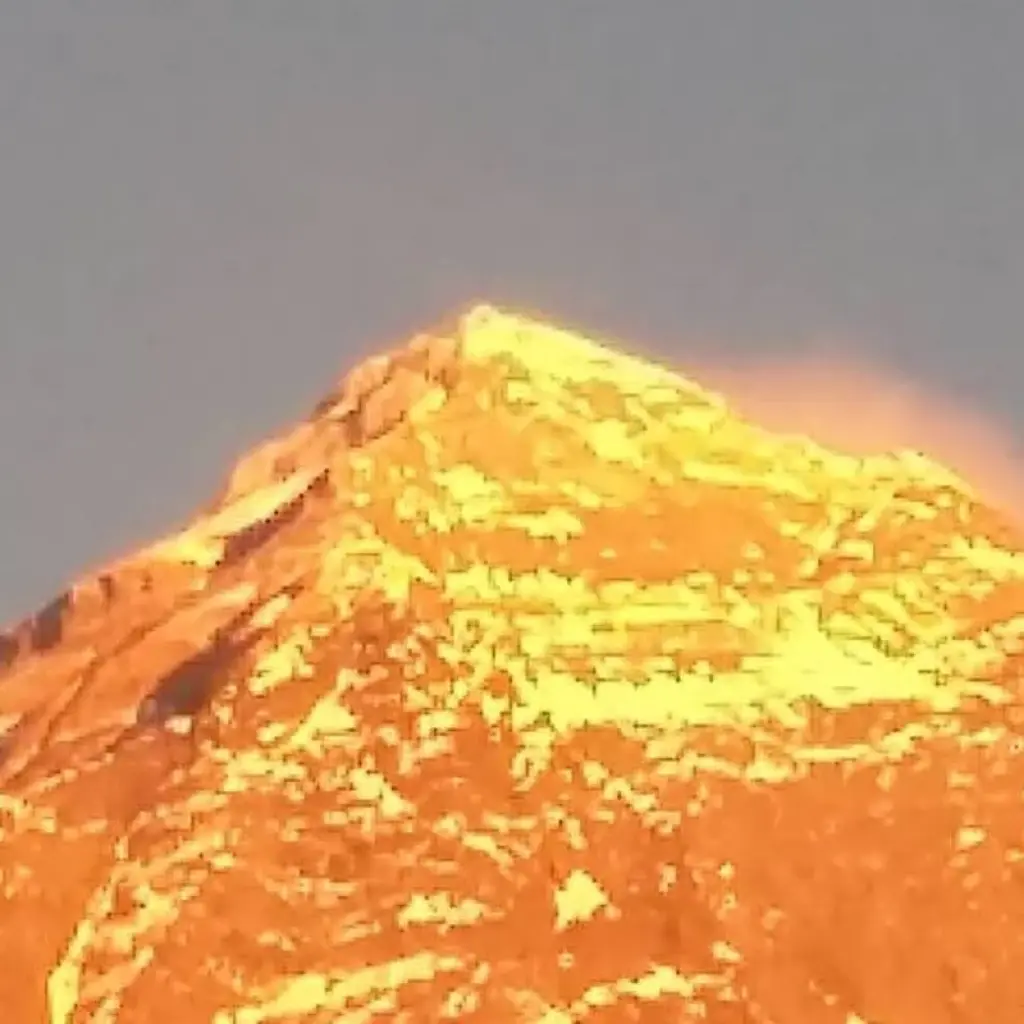You land in Longyearbyen, the administrative center of Svalbard, the largest island in the Svalbard archipelago. Enjoy a walk through the former mining town, whose parish church and the Svalbard Museum are fascinating sights. Although the landscape appears barren, more than a hundred plant species have been counted here. In the early evening, the ship leaves Isfjorden, where you may see the first minke whale of your trip.
Itinerary
14 days (13 nights) Solar eclipse 2026 via East Greenland, from Longyearbyen to Akureyri
Experience an extraordinary Arctic journey through Svalbard and Greenland, which, in addition to observing a solar eclipse, also offers extended hikes off the beaten track. Discover prime areas for spotting polar bears, Arctic foxes, various seal species and a variety of whales.
Solar eclipse information:
70.878 north latitude, 27.286 west longitude (Øfjord in Scoresby Sund) Duration of eclipse: 2 hours, 1 minute Duration of totality: 2 minutes, 17 seconds GMT (= Ittoqqortoormiit time minus 1 hour)
Start of the eclipse: 04:33 hrs
Start of totality: 05:33
Max. Eclipse: 05:35 (Alt. 25.0)
End of totality: 05:36
End of the eclipse: 06:34 hrs
Tour program
Biggest city, biggest island
Sabine's observatory and Raudfjord
In 1823, the Irish scientist, soldier and explorer Edward Sabine ran an observatory on Indre Norskøya in the northwest of Svalbard. Using a pendulum to study gravity, he proposed a project to measure the meridians (lines of longitude through the poles) on Spitsbergen, the aim of which was to determine the curvature of the earth. You will try to get to Sabinehaugen, where he made his observations. You will then sail into the Raudfjord on the north coast of Spitsbergen, where you will see an extensive fjord with many glaciers - and perhaps even be visited by ringed seals, bearded seals and polar bears. The cliffs and coastline of this fjord are also home to thriving seabird colonies.
Day 3-4: Onward journey to East Greenland
Depending on the weather, you may be able to see the jagged edge of the East Greenland sea ice flashing in front of you. Keep an eye out for whales and migrating seabirds.
Tundra, mountains and icebergs
As you approach Greenland, you can sail through the sea ice into Foster Bay and land at Myggebugten. Behind the old hunter's hut, where Norwegian trappers hunted polar bears and Arctic foxes in the first half of the 20th century, stretches a vast tundra populated by musk oxen, while geese swim on the small lakes. From here we drive through the Kaiser Franz Josef Fjord, which is surrounded by towering mountains and bright icebergs inside. Now is your first long hike (6-7 hours). It starts at Myggbukta station, leads into Badlanddal and then south to Fangsthytte at Cape Bennet. A Zodiac sails ahead of the hiking group and parallel to the coast to keep an eye out for bears. You then sail through the Kaiser Franz Josef Fjord, which is surrounded by towering mountains and glowing icebergs inside.
Islands in the Antarctic Sound
You reach the Devil's Castle, a mountain with a rich geological history. On the other side of the fjord is Blomsterbugt and the planned landing site. In the afternoon, you will sail into the Antarctic Sound to reach the islands of Ruth, Maria and Ella. Maria is the most likely place for a landing.
The high peaks of the Alpefjord
In the morning, you enter Segelsällskapets Fjord, on the north side of which lie the striped slopes of the Berzelius Mountains. You land on the southern shore, where ancient sediment formations lie right at your feet. A hike takes you close to a small lake with a good chance of seeing musk oxen, Arctic hares and ptarmigans. In the afternoon, the ship sails into the Alpefjord, which owes its name to the pointed peaks that tower around it. You can then take a Zodiac cruise around the Gully Glacier, which once blocked access to the interior of these waters. If you venture deep into the fjord, you will experience a true Greenlandic adventure.
Sights of the Arctic fall
The first half of the day is spent in Antarctic Havn, a vast valley where you can observe groups of musk oxen. At this time of year, the sparse vegetation has the fiery colors of autumn.
Largest fjord in the world
Now you reach Scoresby Sund and travel along the glaciated Volquart Boons Kyst. You can also take a Zodiac cruise along one of the glacier fronts and visit the basalt columns and ice formations of Vikingebugt. In the afternoon we sail along the east coast of Milne Land between a multitude of huge icebergs. If a landing in Charcot Havn is possible, take a walk to Charcot Glacier before continuing to Bjørneøer.
Total solar eclipse
In the morning you take a Zodiac cruise near Sorte Ø, surrounded by icebergs. Their stark blue-white color contrasts sharply with the sediment slopes nearby. At midday, the ship positions itself in the middle of the moon's shadow in the Øfjord. In the afternoon, you can watch the solar eclipse either from the ship or from one of the nearby shores.
Gigantic icebergs, arctic hares
In the morning you will encounter colossal icebergs, some of which are over 100 meters high and more than a kilometer long. Then we land near Sydkap, from where you have a beautiful view of Hall Bredning and Arctic hares. The long hike takes you from Sydkap to Satakajik and shows you the remains of Thule winter houses built from whale vertebrae. In the evening you sail into the Øfjord.
Settlement on Scoresby Sound
Today you will make a tundra landing on Liverpool Land, in Hurry Inlet. In the afternoon you will stop in Ittoqqortoormiit, the largest settlement in Scoresby Sund with a population of around four hundred. At the post office you can buy stamps for your postcards or simply stroll around and admire the sled dogs and the dried skins of seals and musk oxen. In the afternoon, we sail south past the picturesque landscapes of the Blosseville coast.
Marine life on the way to Iceland
A day at sea gives you the opportunity to observe whales and seabirds
The end of the journey in Akureyri
Even the greatest adventures come to an end. You disembark in Akureyri, where you can take a chartered bus (six-hour trip, which must be booked in advance) to the bus stop at the Harpa Concert Hall in Austurbakki, Reykjavík, if you wish.
Tour Details
accommodation
Voyage on board the specified ship according to the booked cabin
flights
none
guide
The program includes lectures by well-known naturalists and guided tours by experienced expedition staff
insurance
meals
All meals throughout the voyage are included on board the ship, including snacks, coffee and tea. Drinks are extra
others
Transfer for the bus shuttle between Akureyri (ship) and the bus stop Harpa Concert Hall and Conference Center in Austurbakki, Reykjavik (6 hours)
All shore excursions and activities throughout the trip are conducted by Zodiac
Free use of rubber boots and snowshoes
All other service charges and port fees are included in the entire program
AECO fees and official levies are also included
Comprehensive equipment will be provided prior to departure
Arrangements before and after landing
Passport and visa costs
Government arrival and departure taxes
Meals ashore
Excess baggage charges and all personal expenses such as laundry, bar, drinks and telecommunication charges
The usual tip at the end of the trip for stewards and other service personnel on board
transport
MS Hondius/MS Plancius
Good to know
Currency
Norwegian Krone
Svalbard
Plugs and adapters

Plug type C

Plug type E




